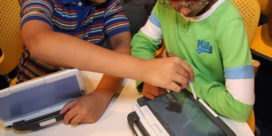Project to evaluate use of tablets in schools
Tablets—with their lightweight portability and interactive touch screens—have been hailed as the next “must have” as schools move toward mobile computing. But questions linger: How much network access…




